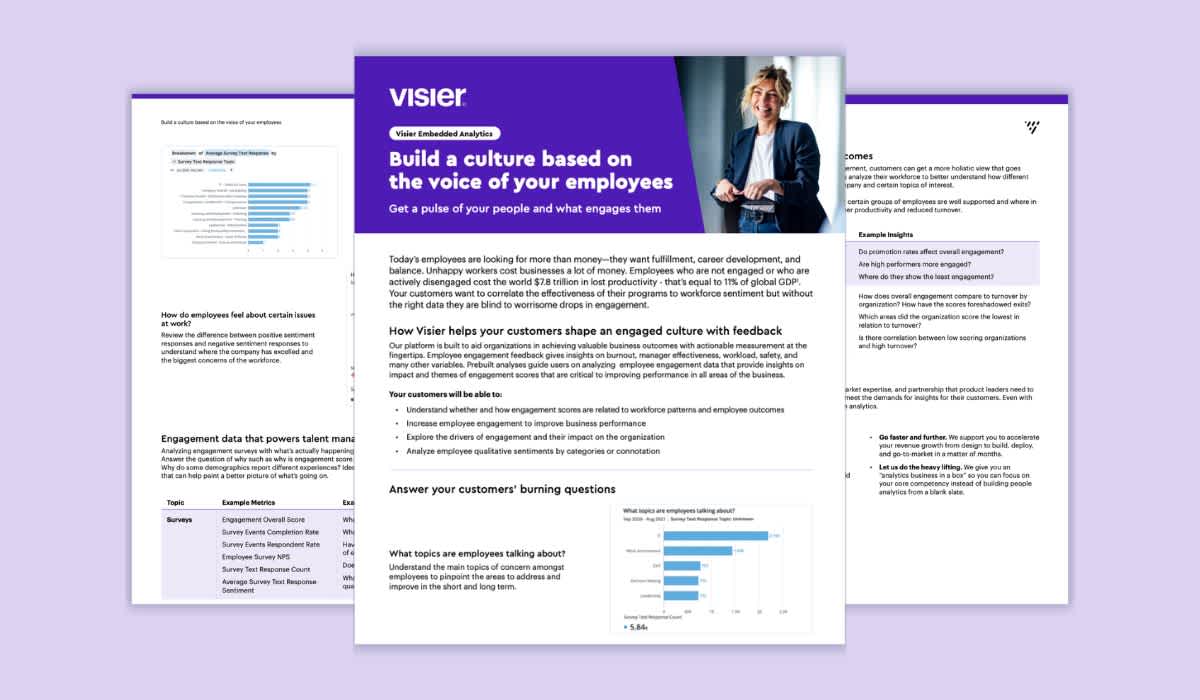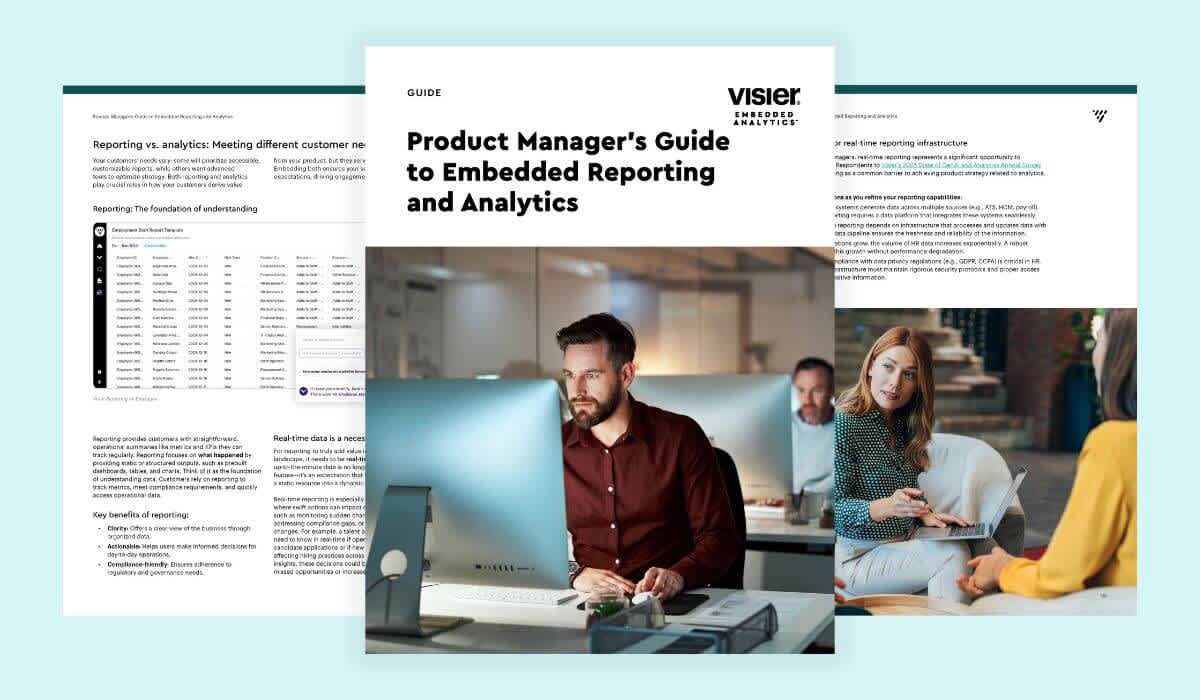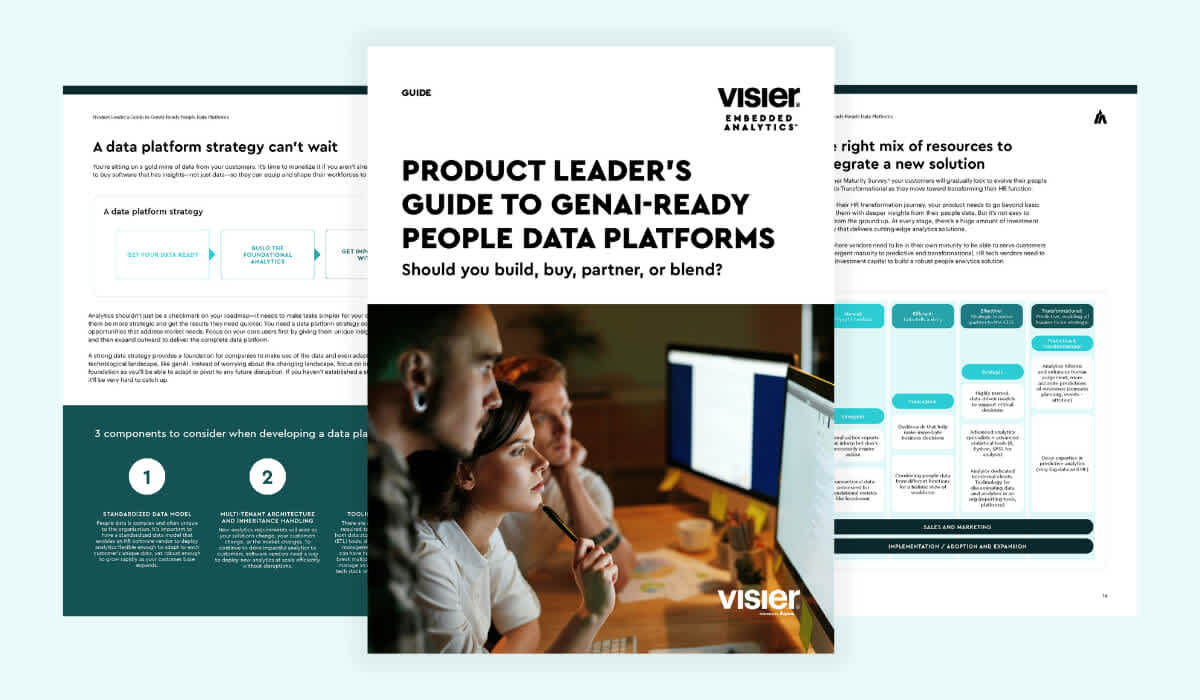How Analytics Enhance Employee Engagement Software
Employee engagement is more than a score. Adding analytics to employee engagement software gives users access to critical talent insights. Learn more here.

Employee engagement is crucial to organizational success, but difficult to accurately measure and act on. On its own, engagement can be hard to measure as it has a high degree of subjectivity. Additionally, employee engagement data is often siloed from other HRIS data, leaving organizations with information gaps that limit their decision-making.
With disparate data systems, even the best engagement tracking applications fail to answer key talent questions like:
How does employee engagement affect business outcomes?
Are high performers more engaged?
What topic areas do employees feel negatively about?
Is there a correlation between low engagement scores and high turnover?
What areas do we need to address and focus on this quarter? How have these areas changed during the year?
This makes it especially challenging for engagement software vendors to prove their value and ROI to potential customers.
People analytics help bridge the gap between data siloes to unify engagement data with HRIS and business data so users can easily find the insights they need—when they need them. Let’s take a closer look at how engagement software and analytics work together to deliver fast time to value.
Employee engagement impacts business performance
Employee engagement has a direct impact on employee productivity and retention, and in turn, business results. In Gallup’s latest meta-analysis of employee engagement in over 110,000 business units, teams scoring in the top quartile of employee engagement experienced 23% higher profitability, 18% higher sales productivity, and 18% to 43% lower turnover than teams in the bottom quartile.
It’s not just that highly engaged employees contribute positively toward profitability and productivity—disengaged employees actually cost the business. By Gallup’s calculations, disengaged employees cost the world’s economy $8.8 trillion in lost productivity—equivalent to 9% of global GDP.
Highly engaged employees drive business outcomes and performance, but it takes more than tracking a single engagement score to increase employee engagement and productivity.
Connecting engagement to business outcomes with analytics
For individual executives and people managers, engagement data can be incredibly hard to act on. Employee engagement data can be difficult to standardize and use. Engagement ratings are often hard to quantify. They vary widely from employee to employee, and open-text answers are difficult and time-intensive to analyze. Plus, engagement data is typically anonymized and stored separately. When engagement scores are presented as isolated metrics, users can’t make the crucial link between engagement investments and key business outcomes.
Connecting engagement scores to other key metrics, like performance ratings, resignations, promotions, and manager instability, provides actionable context. Suppose a disengaged employee is also a low performer with a high likelihood of near-term resignation. Is it worth the time, effort, and resources to try to boost that employee’s engagement? What qualities do low-engagement employees share that high-engagement employees do not? By asking these types of questions, leaders can pinpoint engagement trends and characteristics that lead to better business outcomes in a way that lets users make better decisions with their data.
To embark on these kinds of engagement investigations, your analytics software needs to bring together data from disparate sources, like HR management systems (HRMS), performance management systems, and enterprise resource planning (ERP) systems.
3 ways your customers can use analytics in your engagement software
People analytics transform common HR data into actionable insights and allow users to layer on additional context—like learning, promotions, and performance review data—to get a complete picture and in turn, make better workforce decisions. Here are three ways your customers can make data-driven decisions using analytics in your engagement software:
Understand how engagement scores relate to workforce patterns and employee output. With analytics in your software, users can easily correlate engagement scores with patterns and trends within your organization, such as absenteeism, employee sentiment, and performance reviews. They can use this information to establish a baseline for your organization and identify areas where they need to take a closer look.
Increase employee engagement to improve business performance. People analytics provide actionable insights that help organizations identify key areas where employee engagement can be improved. Users can drill down into a particular question to understand the factors that might be impacting engagement scores to create fast, tailored strategies to course correct.
Explore the drivers of engagement and their impact on the organization. People analytics help organizations pinpoint the specific factors that drive engagement, such as manager effectiveness, workplace culture, and career development opportunities. Teams can use these insights to prioritize initiatives that have the most significant impact on their employees.
With all of these insights in one place, your customers can unlock the value of engagement data by taking part in broad, ad-hoc analysis. Analytics let users pinpoint key groups for improvement, identify and track ROI on engagement investments, and measure the results of various strategies.
Improve talent management and engagement with analytics
Analytics provide the context and insights your customers need to make strategic, data-driven talent management and employee engagement decisions. Visier’s Talent Management Analytics fit into your product, so users are getting more from your software—proving your ROI and increasing product stickiness.
Visier uses real-time data instead of surveys to help track and manage employee engagement. Combining survey data, people data, and business data provides the clearest view of current employee engagement levels—and identifies what levers should be pulled to make improvements. With guided analysis journeys, Visier ensures every end-user—no matter their data literacy level—can engage with and make the most of their data.
Ready to learn more?
Your customers want more than just an engagement score. Visier can help you bring actionable engagement analytics to your product. Learn more about the Talent Management Embedded Analytics application here.

Embed people analytics into your app
To make sense of the changing world of work, businesses of all sizes need analytics. There are typically three paths software vendors can take based on their goals—read about them here.
Contextual analytics delivers answers directly in the platforms people already use, bringing data and insights into the ways they already work. Learn how to combine the power of contextual and embedded analytics here.
GenAI can be used throughout the employee lifecycle to increase productivity and support strategic workforce planning. Get the scoop.
Embedded analytics are analytics capabilities that are integrated within another application—and the value goes far beyond just convenience. Here's what you need to know.


